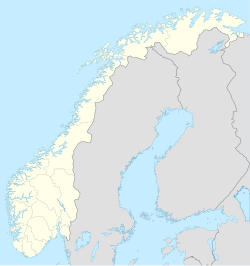Miland
Today I want to talk about Miland, a topic that has gained great relevance in recent times. Miland is a theme that has captured the attention of people of all ages, genders and nationalities, as it has universal appeal. Throughout history, Miland has been the subject of studies, debate and controversy, but its importance and impact are undeniable. In this article, we will explore different aspects related to Miland, from its origin to its influence on today's society. I hope this analysis contributes to providing a broader and deeper insight into Miland and its implications in our world.
Miland | |
|---|---|
Village | |
 View of the village Credit: Jan-Tore Egge | |
| Coordinates: 59°55′30″N 8°45′13″E / 59.9251°N 8.75359°E | |
| Country | Norway |
| Region | Eastern Norway |
| County | Telemark |
| District | Aust-Telemark |
| Municipality | Tinn Municipality |
| Area | |
• Total | 0.33 km2 (0.13 sq mi) |
| Elevation | 218 m (715 ft) |
| Population (2022)[1] | |
• Total | 291 |
| • Density | 872/km2 (2,260/sq mi) |
| Time zone | UTC+01:00 (CET) |
| • Summer (DST) | UTC+02:00 (CEST) |
| Post Code | 3658 Miland |
Miland is a village in Tinn Municipality in Telemark county, Norway. The village is located in the Vestfjorddalen valley, near the western shore of the large lake Tinnsjå, about 11 kilometres (6.8 mi) east of the town of Rjukan, about 10 kilometres (6.2 mi) south of the village of Atrå, and about 10 kilometres (6.2 mi) to the southwest (across the lake) from the village of Austbygde.[3]
The 0.33-square-kilometre (82-acre) village has a population (2022) of 291 and a population density of 872 inhabitants per square kilometre (2,260/sq mi).[1]
The mountain Gaustatoppen lies about 10 kilometres (6.2 mi) to the southwest of Miland. The river Måna runs along the south side of the village on its way to the lake Tinnsjå. Mæl Church is located just east of the village.[3]
References
- ^ a b c Statistisk sentralbyrå (1 January 2022). "Urban settlements. Population and area, by municipality".
- ^ "Miland, Tinn". yr.no. Retrieved 20 August 2023.
- ^ a b Mæhlum, Lars, ed. (28 December 2022). "Miland". Store norske leksikon (in Norwegian). Kunnskapsforlaget. Retrieved 20 August 2023.

